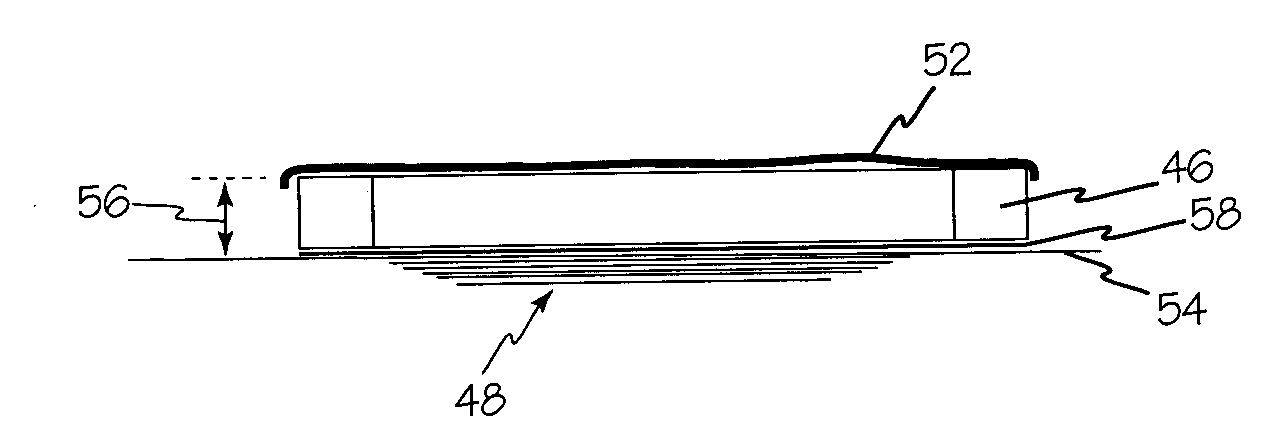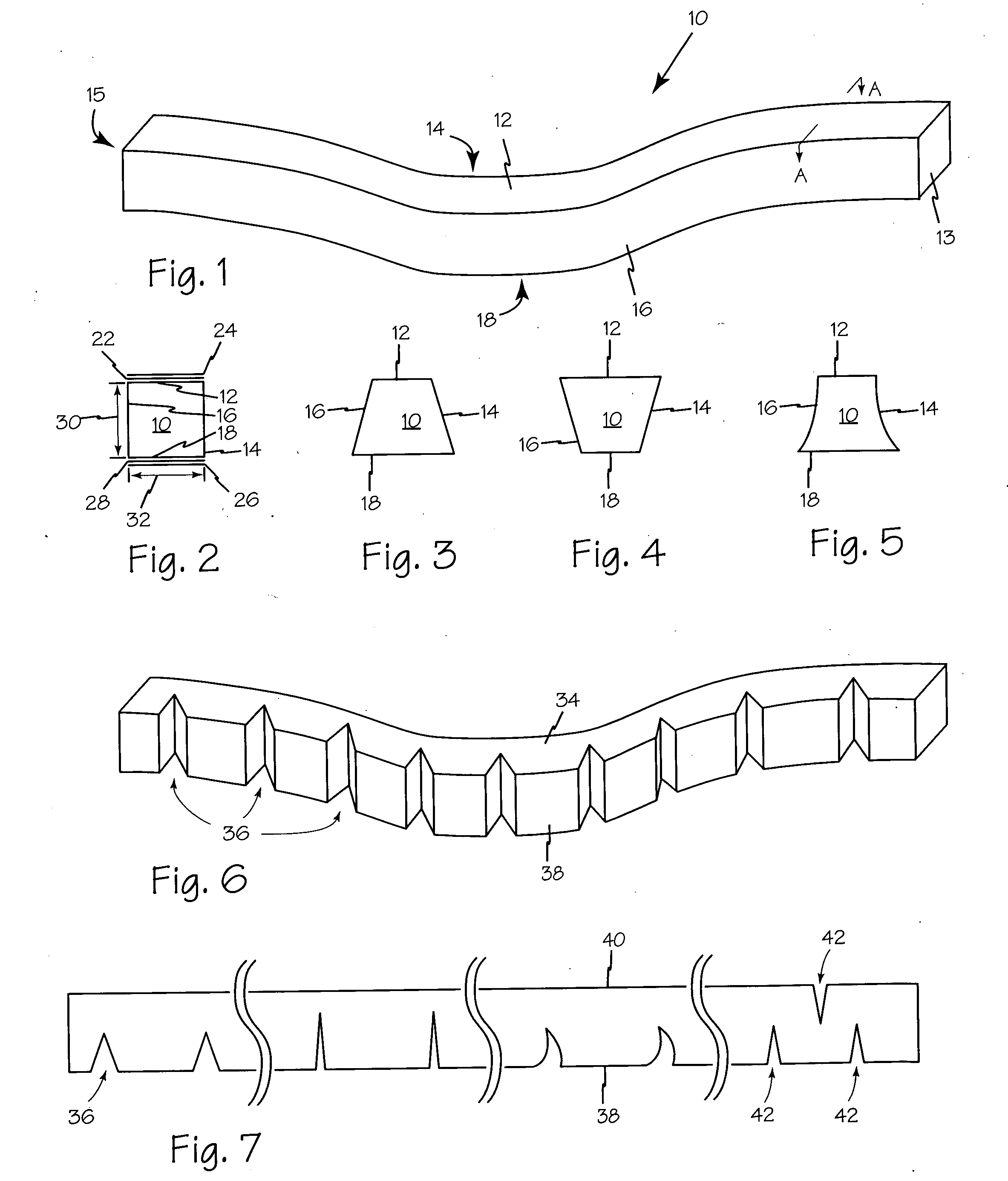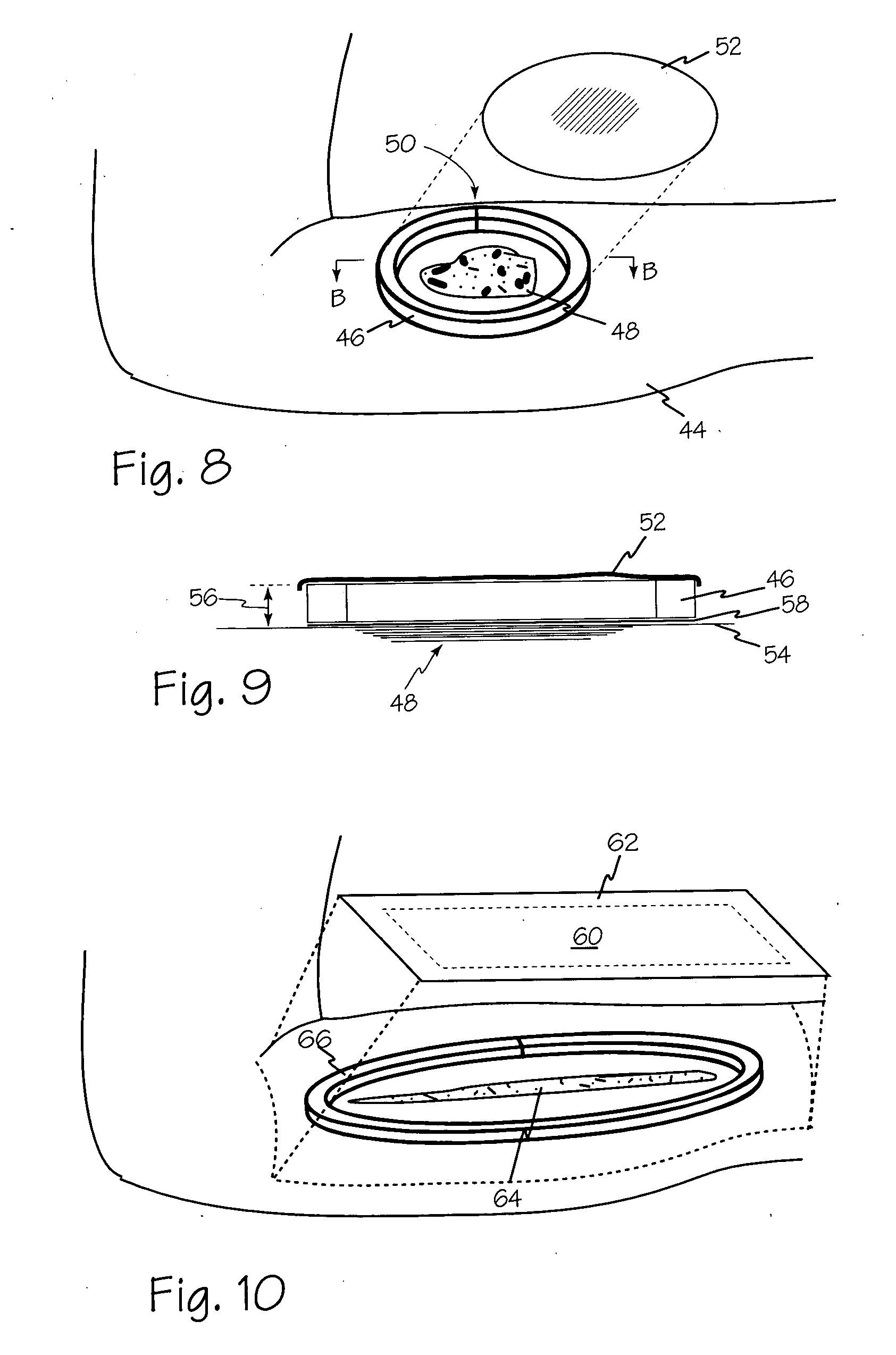Wound shield
a wound shield and shield technology, applied in the field of wound care management, can solve the problems of exacerbated problems, inconvenient use, and inability to efficiently and effectively protect wounds from injurious contacts, and achieve the effects of reducing the risk of injury
- Summary
- Abstract
- Description
- Claims
- Application Information
AI Technical Summary
Benefits of technology
Problems solved by technology
Method used
Image
Examples
Embodiment Construction
[0050] Referring to FIG. 1 and FIG. 2, conformable frame 10 provides perimeter protection for a wound and may conform to specific contours of the wound site. Conformable frame 10 includes exterior side 14 facing away from the wound and interior side 16 facing the wound, superficial surface 12 for engaging dressings and cutaneous surface 18 in contact with the patient's skin, or any other dressing or apparatus in contact with the patient's skin. Any suitable adhesive may be applied to cutaneous surface 18 and or superficial surface 12 such as adhesive 28 and 22 respectively. Adhesive layers 22 and 28 may also be covered by a strip or a film, such as film 24 and 26 respectively, that can be peeled off at the time of use. Adhesive 28 secures conformable frame 10 to skin surrounding a wound, or in some applications, to a dressing or apparatus that is in contact with the patient's skin. When applied to superficial surface 12, adhesive layer 22 may engage a dressing or other suitable cove...
PUM
 Login to View More
Login to View More Abstract
Description
Claims
Application Information
 Login to View More
Login to View More - R&D
- Intellectual Property
- Life Sciences
- Materials
- Tech Scout
- Unparalleled Data Quality
- Higher Quality Content
- 60% Fewer Hallucinations
Browse by: Latest US Patents, China's latest patents, Technical Efficacy Thesaurus, Application Domain, Technology Topic, Popular Technical Reports.
© 2025 PatSnap. All rights reserved.Legal|Privacy policy|Modern Slavery Act Transparency Statement|Sitemap|About US| Contact US: help@patsnap.com



